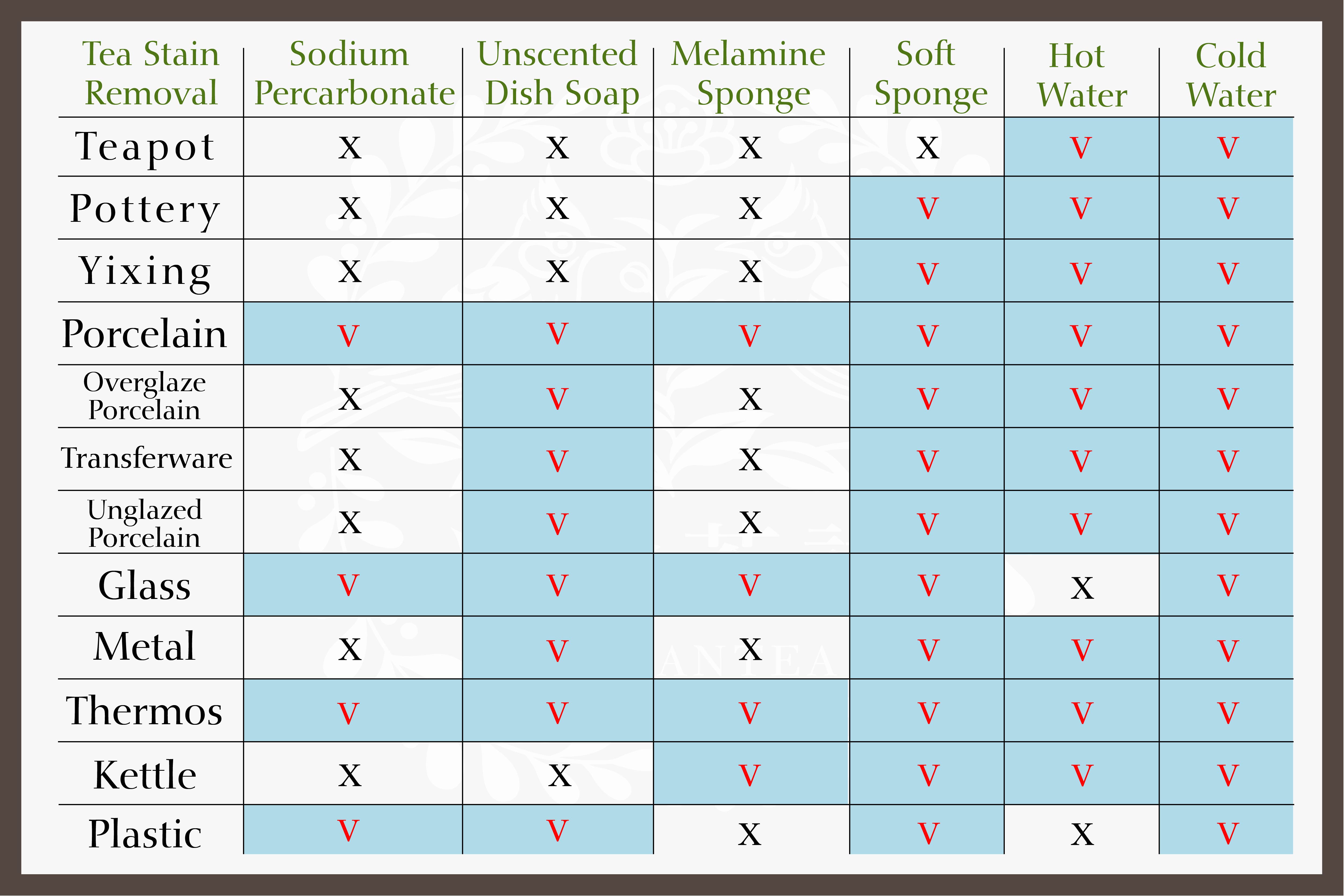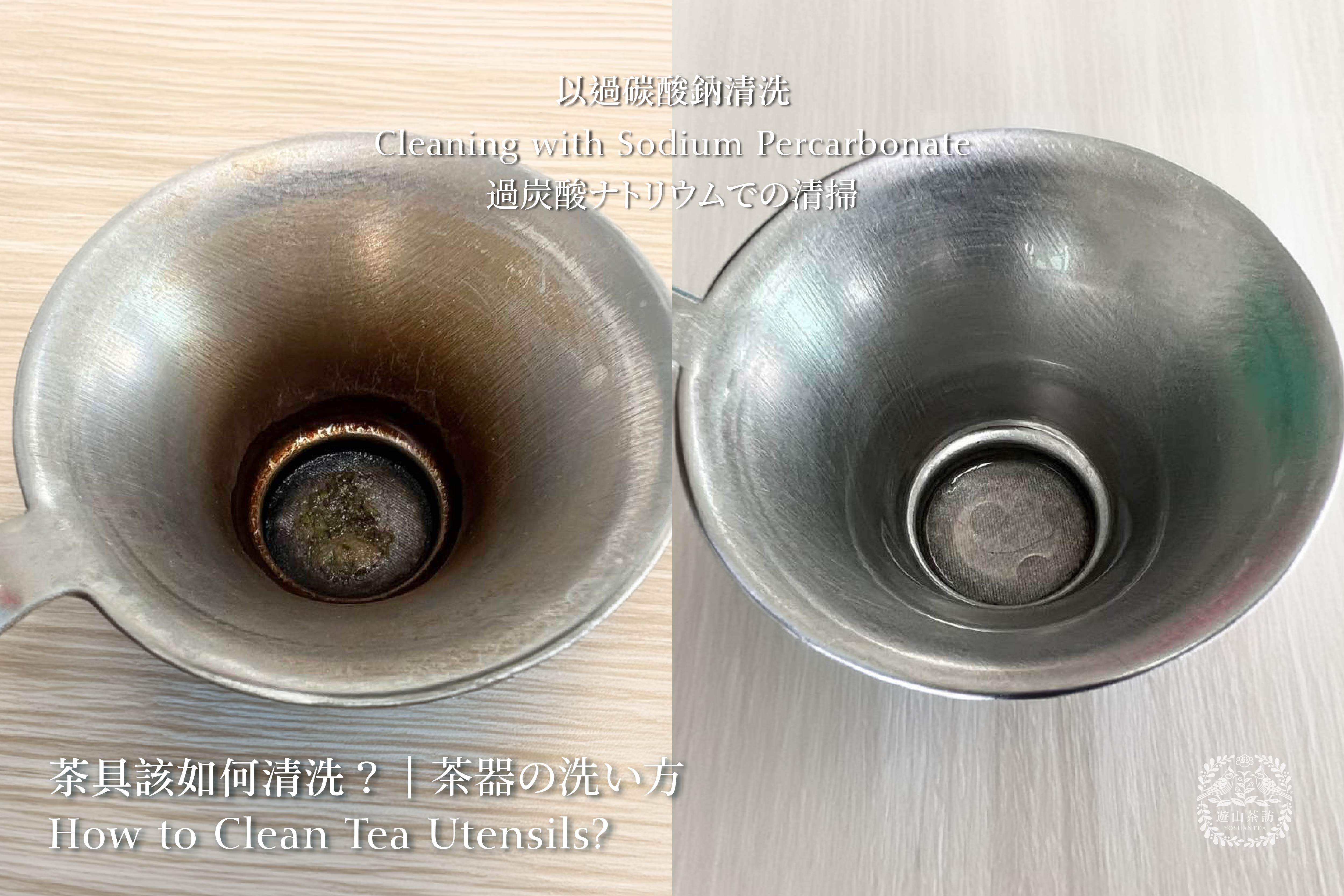Hello everyone,
I’m Andy, a tea enthusiast.
There are many different materials for tea utensils,
and knowing how to clean them can be quite a challenge.
Today, I’ll share with you cleaning methods suitable for different types of tea utensils.
➤ The Difference Between Tea Stains and Limescale.
Tea stains are mainly pigments,
while limescale is primarily crystallized minerals.
Tea stains consist of polymers formed from oxidized polyphenols,
which are dark brown and have strong adhesion.
These stains typically occur when tea utensils are not cleaned immediately after use.
Limescale is composed of calcium carbonate and magnesium carbonate,
usually forming after boiling water.
It has strong adhesion, appears as white or light yellow crystals,
and can build up like stalactites.
➤ How to Clean a Teapot?
The teapot is the most complex and fragile of all tea utensils.
The standard cleaning method is to pour boiling water into the teapot after brewing tea,
allowing the teapot's temperature to rise, then rinse with boiling water and air dry.
Because of the high-water temperature, the drying time is relatively short.
Be sure to store the dried teapot immediately to prevent it from breaking.
To avoid mold, do not store the teapot if it hasn’t dried completely.
➤ What is "Enzyme"?
A cleaning agent known as "enzyme" is available in the form of white granules,
and it has strong cleaning power.
The real name of this "enzyme" is sodium percarbonate (CAS: 15630-89-4).
When mixed with hot water, it generates large amounts of hydrogen peroxide,
a powerful oxidizing agent with strong bleaching properties.
Although it is generally safe,
it’s recommended to wipe the cleaned tea utensils with a soft sponge afterward.
Since it is a bleach, avoid using it on colored tea utensils as it may cause the patterns to fade.
If the tea utensils have a glazed surface (underglaze decoration),
you can try using it,
but it’s not recommended for unglazed items such as clay, Yixing, or lacquerware.
➤ Can Bleach (Sodium Hypochlorite, CAS: 7681-52-9) Be Used to Clean Tea Utensils?
No, bleach has a strong, unpleasant odor and is generally used for disinfecting environments.
➤ How to Properly Use Melamine Sponge?
Melamine sponge, also known as magic eraser,
is made of melamine foam and has strong cleaning power.
You can think of it as a type of sandpaper that removes tea stains through friction.
Avoid using it with hot water to prevent the release of toxins.
Also, avoid using it frequently on tea utensils to prevent scratches or pattern fading.
➤ How to Remove Limescale?
Use citric acid (CAS: 77-92-9) and soak the utensil for a long time.
Limescale often appears in kettles; after adding citric acid,
bring it to a boil to quickly remove the scale.
Citric acid cannot remove tea stains.
➤ Are There "Food-Grade" or "Non-Toxic" Cleaning Agents?
If it’s a cleaning agent,
it means it’s not edible and could be toxic.
According to the law,
no cleaning agent can be labeled as "food-grade" or "non-toxic."
➤ Interesting Fact About Tea Stains
There’s a legend of a teapot that can produce tea just by adding hot water,
without any tea leaves.
This phenomenon is quite fascinating and is due to the
accumulation of tea stains from not cleaning the teapot properly over time.
In summary,
The key points for cleaning tea utensils are to avoid scratching and to prevent fading.
By keeping these two points in mind,
you can find the appropriate cleaning method.
Attached is a reference table for different materials and cleaning methods.
I hope today’s sharing is helpful to everyone.
See you next time.
#yoshantea #taiwantea #dongdingtea #oolongtea #teafactory #FSSC22000 #safetea #cleaningtips #teastains #limescale #teautensils #teapotcare #teacleaning #enzymecleaner #citricacid #melaminesponge #sodiumpercarbonate


